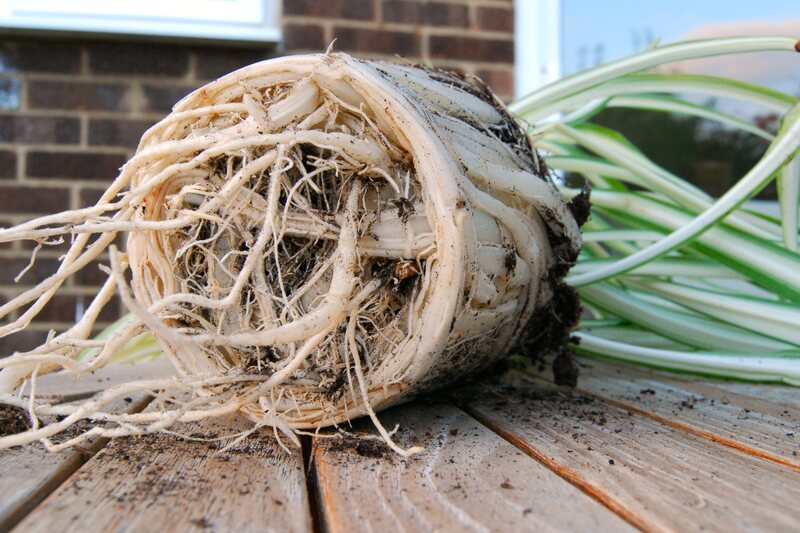Design a Stimulating Garden Experience for Children
Posted on 31/08/2025
Design a Stimulating Garden Experience for Children: A Comprehensive Guide
Creating a stimulating garden experience for children is an excellent way to foster their love for nature, encourage outdoor play, and nurture lifelong skills. From engaging all their senses to designing imaginative play spaces, this informative article delivers practical, google-friendly strategies for crafting vibrant, educational gardens that kids will love to explore.
Why Designing a Stimulating Children's Garden Matters
A thoughtfully planned children's garden is more than just a pretty space. It's a hands-on, immersive environment that sparks curiosity, promotes learning, and supports child development. In a world loaded with screens, a stimulating outdoor garden provides crucial opportunities for:
- Physical exercise and improved motor skills
- Discovery-based learning about science and the environment
- Self-expression, creativity, and problem-solving
- Social interaction and teamwork
- Emotional wellbeing and stress reduction
Let's dig deep into essential steps and fresh ideas to design a phenomenal garden experience for children of all ages!

Steps to Create an Engaging Garden for Kids
1. Involve Children in the Planning Process
A garden for children should reflect their unique interests and ignite their enthusiasm. To design a truly stimulating children's garden experience, invite kids to participate right from the start:
- Ask about their favourite colors, themes, and types of play
- Let them draw ideas or make a wish list
- Brainstorm together on what to grow - veggies, herbs, flowers, or fruit?
By giving kids ownership, you nurture a sense of responsibility and heighten their anticipation.
2. Create Zones for Exploration, Learning, and Imagination
Diverse garden zones make the outdoor experience dynamic and captivating. Consider dividing your space into different "mini-worlds" where kids can roam, tinker, and rest:
- Sensory zones - Feature plants and elements for touch, smell, sound, sight, and taste
- Edible gardens - Raised beds or containers for growing easy crops
- Pollinator zones - Flowers and shrubs that attract butterflies, bees, and birds
- Discovery nooks - Secret paths, hidden dens, or "fairy corners"
- Creative play areas - Spots for art, music, storytelling, or mud kitchens
Such zoning not only sustains children's attention but also supports the development of diverse skills.
3. Make It Multi-Sensory
A stimulating children's garden experience embraces every sense:
- Sight: Plant rainbow colours--think sunflowers, marigolds, bluebells, ornamental kale
- Touch: Incorporate textures, such as soft lamb's ears, spiky grasses, feathery ferns, pebbles, and sand
- Smell: Grow fragrant herbs and flowers--lavender, mint, basil, sweet peas, honeysuckle
- Sound: Add wind chimes, bamboo canes, rustling grasses, or water features
- Taste: Include edible delights like strawberries, tomatoes, snap peas, nasturtium flowers
By engaging all senses, you boost learning and create unforgettable garden memories.
4. Focus on Safety and Accessibility
Safety is paramount in any garden designed for children. Keep these guidelines in mind:
- Choose non-toxic plants and avoid anything poisonous or spiky
- Use smooth, slip-resistant paths for easy movement
- Add child-height raised beds and reachable containers
- Provide shaded areas for rest and protection on sunny days
- Keep tools and chemicals safely locked away
5. Add Opportunities for Hands-On Gardening
Learning by doing is at the heart of a powerful, stimulating children's garden. Encourage kids to:
- Dig, plant, and water garden beds
- Harvest fruit, veggies, and herbs
- Observe insects and life cycles with bug hotels or butterfly houses
- Compost kitchen scraps and watch decomposition in action
These experiences foster responsibility, patience, and a connection with the earth.
Top Ideas to Stimulate Kids in the Garden
Edible Exploration: Grow and Taste Together
One of the hottest trends in children's garden design is including edible plants. Not only are these fun to grow and harvest, but they also open doors to healthy eating habits. Try:
- Strawberry pyramids or hanging baskets for sweet, low-maintenance snacking
- Pizza gardens with tomatoes, oregano, basil, peppers, and onions arranged in a circle
- Mini salad beds for young lettuces, radish, and cucumbers
- Herb spirals or sensory pots for exploratory cooking
Involve kids in seed selection, planting, and recipe creation for full engagement.
Wildlife Havens: Invite Nature to the Garden
A stimulating outdoor experience thrives when kids can observe the bustling world of insects, birds, and small animals. Simple wildlife-friendly ideas include:
- Planting nectar-rich flowers to attract pollinators
- Building bug hotels from recycled materials
- Hanging bird feeders and making DIY bird baths
- Creating log piles or stone heaps for frogs, hedgehogs, and beetles
Encourage children to keep nature journals and track the creatures they encounter.
Imaginative Play Spaces
No stimulating children's garden is complete without magical places that spark imagination and storytelling. Some inspiring ideas:
- Willow or bamboo tunnels and tipis - create natural hideouts and secret paths
- Muddy play kitchens with old utensils and "ingredient plants"
- Outdoor blackboards or easels for art in the open air
- Storytelling corners with log seats and handmade fairy houses
- Music walls featuring pots, pans, pipes, and bells
These areas not only stimulate creativity but also enhance social skills as kids collaborate in play.
Science and Discovery Zones
Boost the educational value of your stimulating garden by including zones for scientific exploration. Try:
- Weather stations for tracking rain, sun, and wind
- Magnifying glasses, bug viewers, and treasure hunts
- Sunflower "houses" or corn mazes to study plant growth
- Water play stations for experimenting with flow and floating
- Compost bins for observing decomposition and soil life
Hands-on activities make complex concepts tangible and fun.
Seasonal Delights and Celebrations
Children's garden experiences are richest when they connect kids to the cycles of nature throughout the year. Ideas include:
- Spring seed sowing festivals and planting days
- Summer picnics, scavenger hunts, and flower picking
- Autumn harvest parties with apple pressing and pumpkin crafts
- Winter bird feeding and nature art from twigs and seeds
Marking seasonal changes helps children appreciate the garden's changing beauty and rhythms.
Plant Selection for a Stimulating Garden Experience for Children
Careful plant selection is key to building a truly engaging garden for children. Prioritize:
- Low-maintenance, resilient species that withstand enthusiastic handling
- Fast-growing annuals for quick results (e.g., sunflowers, nasturtiums, sweet peas, radish)
- Touch-friendly plants (lamb's ear, succulents, mosses, ornamental grasses)
- Fragrant herbs and flowers (lavender, rosemary, mint, scented pelargoniums)
- Tasty crops (cherry tomatoes, berries, peas, runner beans)
- Safe, non-toxic varieties (always check before planting!)
Don't forget container gardening for small spaces; even apartments can host stimulating mini-gardens.
Essential Tips for a Successful Children's Garden
- Start small and expand - A few raised beds or containers are plenty for beginners.
- Use bright colors and decorate with kids' art, painted stones, or windmills.
- Label plants with playful signs to aid learning and identification.
- Install sturdy seating and low tables for projects, snacks, or storytelling.
- Include plenty of storage for tools, toys, and outdoor gear.
- Embrace wildness - Let one section grow a bit wild for bug-hunting and adventure.
- Encourage children to lead their own gardening projects as their skills grow.
Enhancing Learning and Development Through a Stimulating Children's Garden
A stimulating outdoor garden is an educational powerhouse, supporting children in:
- Understanding the basics of biology and ecology
- Practicing math through measuring and weighing
- Developing patience, responsibility, and teamwork
- Strengthening observation and critical thinking skills
- Building resilience through managing triumphs and setbacks
Integrate storytelling, journaling, and art to round out the experience, making the garden a source of inspiration across all learning styles.

Frequently Asked Questions (FAQ)
What age is best to start gardening with children?
You can begin introducing children to the garden as soon as they can walk. Toddlers love sensory experiences, while older children are ready for planting, harvesting, and more complex tasks.
What are the easiest plants to grow for a children's garden?
- Sunflowers
- Radishes
- Peas and beans
- Cherry tomatoes
- Strawberries
- Pumpkins and squash
How can I make my garden more inclusive for children with different needs?
- Install smooth, wide paths for wheelchairs and strollers
- Use raised beds and vertical planters for accessibility
- Provide sensory features for children with visual impairments
- Create quiet retreats for sensitive or neurodiverse children
Conclusion: Growing More Than a Garden
Designing a stimulating garden experience for children is both a creative adventure and an investment in healthy, happy development. By combining colorful plants, sensory features, safe and imaginative spaces, and hands-on learning, you cultivate not just a garden, but lasting memories and vital skills.
Start planning your children's garden today and watch new roots of curiosity, confidence, and joy spring up season after season!

